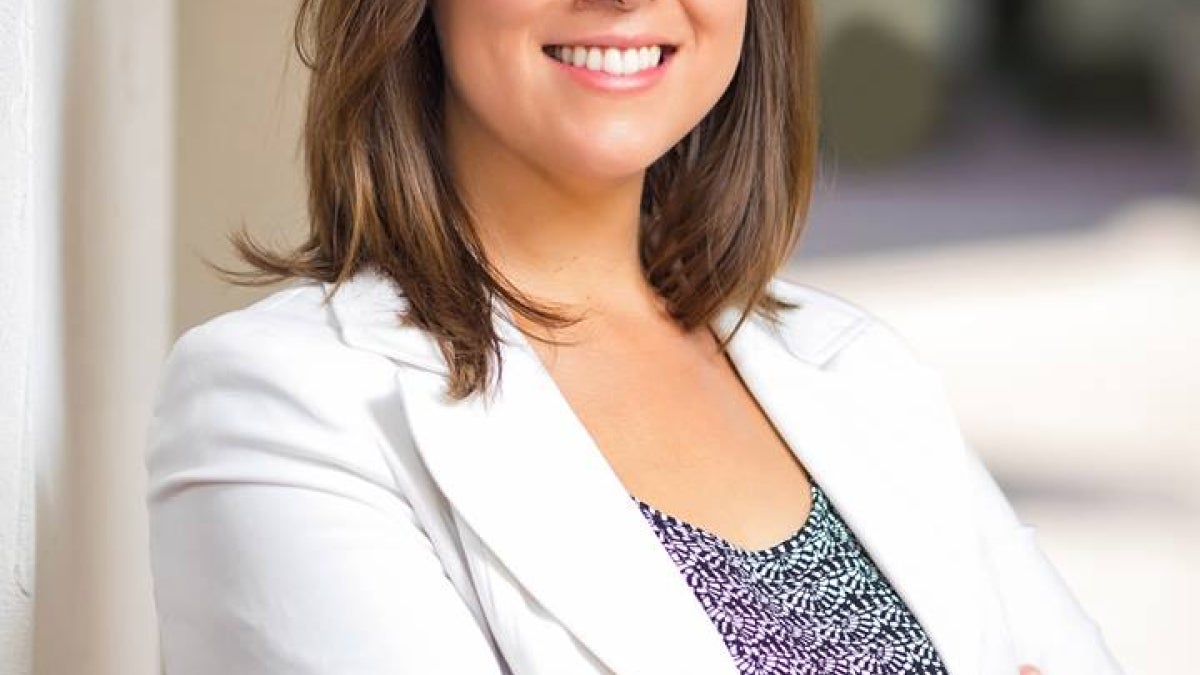Virtual internship takes innovation to the next level

Katie Curiel, a graduate student in the new School for the Future of Innovation in Society, is an intern with the Virtual Student Foreign Service program.
Arizona State University has been named the most innovative college in the country, and now select Sun Devil students are taking part in one of the U.S. Department of State’s most innovative programs for aspiring government workers.
The Virtual Student Foreign Service (VSFS) was created in 2009 by the Office of eDiplomacy, a branch of the State Department responsible for using technology to make the government’s diplomacy efforts more productive. Students apply to become VSFS officers in one of 21 government agencies, including the National Aeronautics and Space Administration (NASA) and the Department of Homeland Security (DHS).
“We kind of created the idea of virtual internships,” said Bridget Roddy, coordinator for the VSFS in the Office of eDiplomacy. “It’s really, really grown, and it’s becoming a model that other agencies are really latching onto.”
Accepted applicants are allowed the freedom to work from home as “eInterns,” where they assist on various government projects for nine months at a time. This year, 720 VSFS officers — three of whom are ASU students — were selected out of more than 2,700 applicants.
Amy Umaretiya, a senior undergraduate majoring in civil engineering and political science in the Ira A. Fulton Schools of Engineering and the College of Liberal Arts and Scienes, is a VSFS eIntern with NASA. In her role, she conducts research on renewable energy that can be used to power stations in harsh environments in high latitude and high altitude. Umaretiya chose to participate in the VSFS to build upon her interests after spending a summer interning for the U.S. House of Representatives Committee on Science, Space, and Technology and being a part of ASU’s Policy, Science, Technology, and Society Scholars Program.
“I love what I’m doing with NASA. My supervisors have been great with giving me a lot of guidance while also letting me shape my own progress,” Umaretiya said. “They know I’m interested in more than just the technical aspects of the problem, and have given me a lot [to] think about on the social side. For example, how can we address the fact that some communities were built around coal mines when we have to switch energy sources? These are the kinds of interdisciplinary questions I’d like to answer in my future career.”
The VSFS also particularly appealed to senior undergrad Jon Arias, who is an ASU online student dual majoring in history and mass communication. Arias lives in California, but that hasn’t prevented him from eInterning for the Washington-based State Department, as well as with NASA, which has operations in several locations around the country.
“The work that is being done through the various VSFS positions is life changing. It truly is,” Arias said. “But, what fascinates me is the potential to reach someone who is working on the next invention, and just needs a little spark or idea. Perhaps they are unaware of what NASA has already done that could help or change the direction of their own project. To be a part of that in any small way is rewarding to me.”
Katie Curiel, a graduate student in the School for the Future of Innovation in Society, has been able to implement her years of experience in education and her major in global technology and development in helping to run the U.S. Agency for International Development’s (USAID) new Global Innovation Exchange, a platform designed to bring investors and social entrepreneurs together to foster project funding and ideas exchange. Her experience with the VSFS has allowed her the opportunity to travel as far as the Persain Gulf nation of Qatar to talk about the Exchange and furthering global development efforts.
“My interest in this internship was that I’d have the opportunity to not only work in something I’m passionate about, but to also extend my career interests and kind of put my foot in the door outside of education and into the field of global development,” Curiel said. “I can bring people and resources in my network to the exchange and it’s a benefit for them and the world.”
Through the students’ VSFS eInternship experiences, they have been able to contribute to significant national and international projects, while also expanding their career preparation and possibilities. The ASU VSFS eInterns, as well as the Office of eDiplomacy, encourage interested students to apply for VSFS positions for the 2016-2017 year.
U.S. students can apply to VSFS once a year in July. Selected students are expected to virtually intern an average of ten hours per week from September 2016 through May 2017. Students may be eligible for course credit for their VSFS eInternships depending on their school’s or college’s internship requirements. Learn more about receiving academic credit at ASU for internships.
For more information on VSFS, visit http://www.state.gov/vsfs/.
Katie Curiel contributed to this article.
More Law, journalism and politics

Cronkite School launches Women Leaders in Sports Media live-learn program
Women in a new sports media program at Arizona State University got a solid game plan from a sports veteran at an Aug. 20 welcome…

ASU center to host the Pursuits of Education and Excellence Symposium
The Center for the Study of Race and Democracy (CSRD) at Arizona State University is introducing the Pursuits of Education and…
ASU journalism students dominate NATAS Student Production Award nominations
Students at Arizona State University’s Walter Cronkite School of Journalism and Mass Communication dominated the nominations…